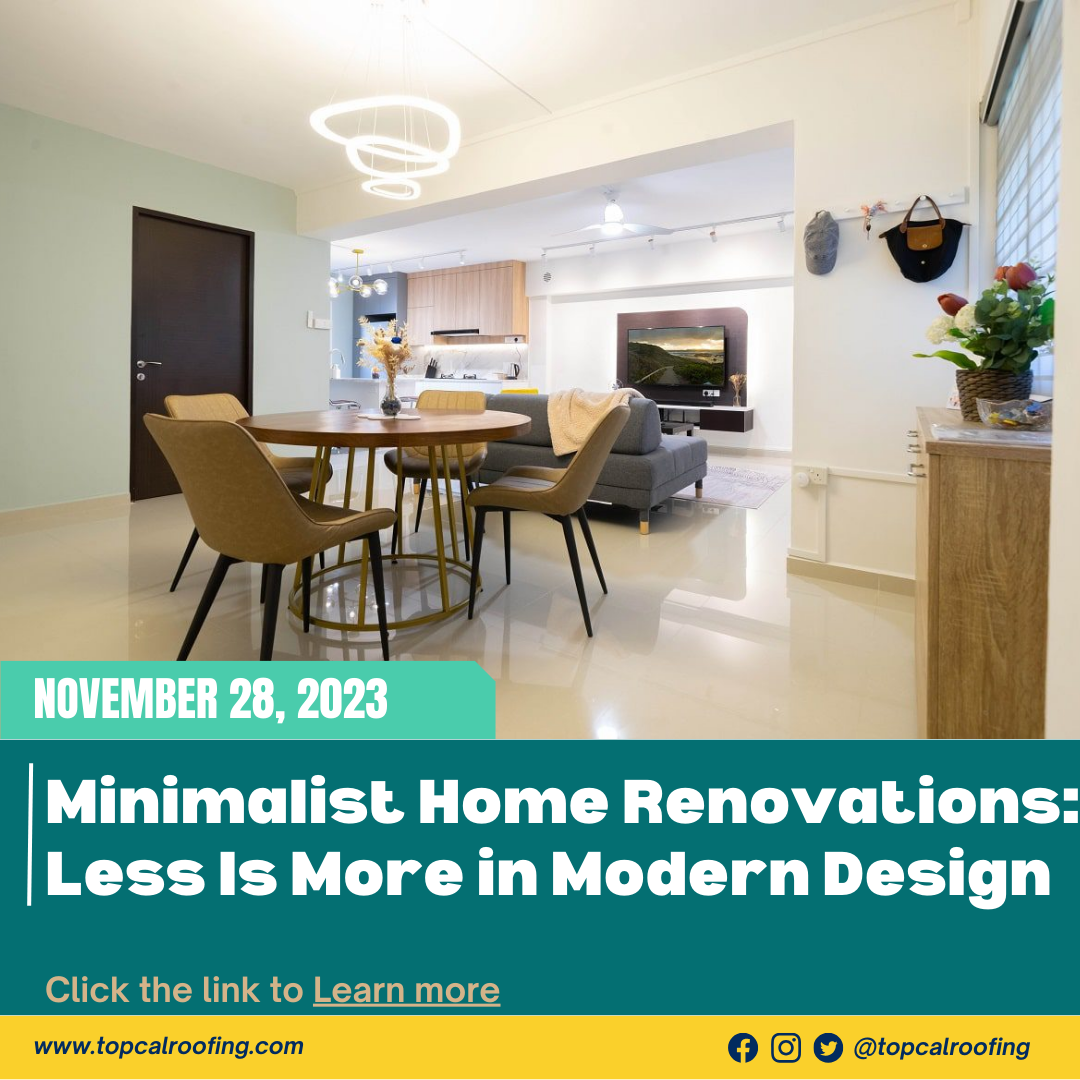Introduction:
In the fast-paced world of today, where simplicity is often overshadowed by the constant influx of trends, there’s a growing movement that embraces the idea that “less is more.” Minimalist home renovations have become increasingly popular, offering a refreshing approach to modern design. This trend is not just about decluttering physical spaces but also about creating an environment that fosters tranquility, functionality, and a sense of purpose. In this blog post, we’ll delve into the essence of minimalist home renovations, exploring the principles, benefits, and practical tips for achieving a harmonious and modern living space.
- Understanding Minimalism in Home Design:
Minimalism is not merely a design aesthetic; it’s a lifestyle choice that advocates for simplicity and functionality. In home renovations, this translates to creating spaces that are uncluttered, clean, and purposeful. Minimalist design often involves paring down to the essentials and focusing on quality over quantity.
- Benefits of Minimalist Home Renovations:
- Enhanced Well-being: A minimalist home provides a serene environment that can contribute to reduced stress levels and improved mental well-being. A clutter-free space promotes clarity of mind and allows residents to focus on what truly matters.
- Efficient Use of Space: By eliminating unnecessary items and opting for multifunctional furniture, minimalist renovations maximize the utility of every square foot. This is particularly advantageous in smaller living spaces.
- Time and Cost Efficiency: With a focus on simplicity, minimalist renovations tend to be more cost-effective and quicker to execute. Streamlining the design process and opting for timeless, durable materials can save both time and money.
- Principles of Minimalist Design:
- Simplicity: The cornerstone of minimalist design is simplicity. This involves decluttering and embracing clean lines and a neutral color palette.
- Functionality: Every element in a minimalist design should serve a purpose. Furniture and decor should be chosen for their utility and not just their aesthetic appeal.
- Quality Over Quantity: Invest in high-quality, durable materials and furnishings. This not only contributes to a sophisticated aesthetic but also reduces the need for frequent replacements.
- Practical Tips for Achieving a Minimalist Home:
- Declutter: Start by decluttering your living space. Donate or discard items that are no longer useful or meaningful.
- Neutral Color Palette: Opt for a neutral color scheme with accents of natural tones. This creates a calming and timeless atmosphere.
- Multifunctional Furniture: Choose furniture that serves multiple purposes, such as storage ottomans or foldable tables.
- Ample Natural Light: Maximize natural light to create an open and airy ambiance. Consider light, sheer window treatments to let in as much sunlight as possible.
- Showcasing Minimalist Renovations: Case Studies:
Highlight real-life examples of minimalist home renovations, showcasing before-and-after images along with the design choices that were made. Discuss how these renovations positively impacted the homeowners’ lives and created a more functional and aesthetically pleasing living space.
Conclusion:
Minimalist home renovations exemplify the adage “less is more” by emphasizing simplicity, functionality, and purpose. By adopting the principles of minimalism, homeowners can transform their living spaces into havens of tranquility and efficiency. Whether you’re embarking on a major renovation or making small changes, the minimalist approach can bring a modern, timeless, and refreshing design to your home. Remember, in the world of home design, sometimes, less truly is more.
